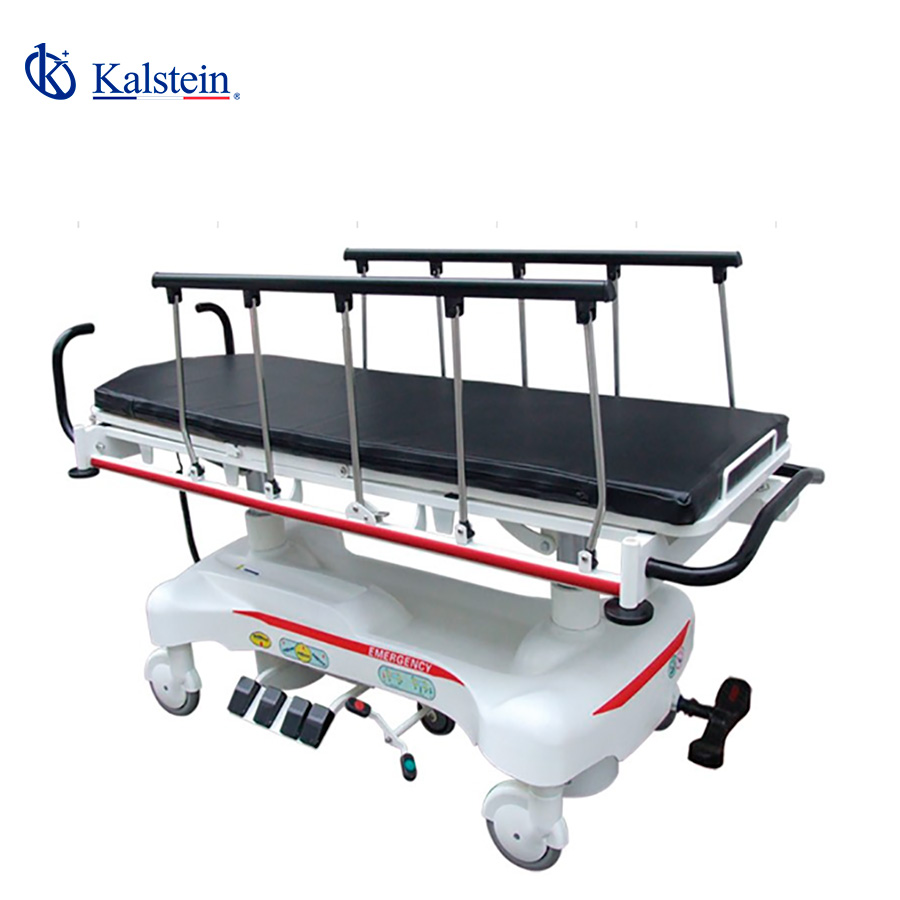Medical transport stretchers are essential tools in any healthcare setting, designed to facilitate the safe and comfortable transport of patients. These stretchers combine ergonomic design with advanced functionality to ensure maximum efficiency and safety during transportation.
In this article, we will explore how to use these stretchers to achieve the best results, highlighting the latest trends in medical technology and recent advances in medical research.
Are you yearning for top-tier medical equipment, ready to enhance the efficiency of your laboratory? Visit https://kalstein.pk/category-product/medical-line/medical-transfer-stretcher/ to explore our high-end catalog, packed with the best finds at the most competitive prices. Excellence marks our brand, we innovate and manufacture high-precision equipment, both reliable and durable to meet your needs. Why wait? Make your quick and secure online purchase, take the leap towards the future of medical technology today. https://kalstein.pk/
Understanding the Ergonomic Design of Transport Stretchers
The ergonomic design of medical transport stretchers is crucial for ensuring patient comfort and ease of use by healthcare personnel. These stretchers are designed to fit human anatomy, providing adequate support to different body parts and minimizing the risk of injury during transport. Additionally, the ergonomic design reduces the fatigue of healthcare staff, allowing for more natural movements and less physical strain.
Modern transport stretchers incorporate lightweight yet durable materials, such as aluminum alloys and high-strength plastics, allowing easy handling without compromising durability. They also feature padding and non-slip surfaces to enhance patient comfort and safety. These ergonomic elements are key to improving transport efficiency and the well-being of both patients and healthcare personnel.
Advanced Functionality for Critical Situations
The advanced functionality of medical transport stretchers allows their use in a wide range of situations, from emergencies to routine transfers within hospital facilities. These stretchers are equipped with adjustable mechanisms that allow modification of height, inclination angle, and other parameters to meet the specific needs of the patient and medical procedure.
For example, stretchers with Trendelenburg function allow tilting the patient at an angle to improve blood circulation in critical situations. Additionally, some stretchers are equipped with brake and lock systems to ensure stability during transport. These advanced features not only enhance patient safety but also optimize operational efficiency in demanding medical environments.
Practical Tips for Efficient Use of Transport Stretchers
To maximize the benefits of medical transport stretchers, it is essential to follow some practical tips that ensure efficient and safe use. First, always check that the stretcher is in good condition before use, inspecting brakes, wheels, and adjustable mechanisms. Regular maintenance is crucial to prevent mechanical failures and ensure the longevity of the equipment.
Second, when transferring a patient, make sure to use proper lifting techniques to avoid injuries. Work as a team with other healthcare professionals to move the patient safely and coordinated. Additionally, adjust the stretcher to a comfortable height to reduce strain on your back and limbs. These tips not only improve patient safety but also protect the health of healthcare staff.
Step-by-Step Tutorial for Safe Patient Transfer
Below is a step-by-step tutorial on how to use a medical transport stretcher to move a patient safely and efficiently. This process begins with preparing the stretcher, ensuring all components are functioning correctly and the stretcher is adjusted to the appropriate height.
-
Patient Preparation: Position the patient comfortably and ensure they are secure. Use safety belts and other restraints if necessary.
-
Coordinated Movement: Work with a team of at least two people. Coordinate your movements to lift the patient smoothly and place them on the stretcher.
-
Stretcher Adjustment: Once the patient is on the stretcher, adjust the inclination and other parameters as needed. Ensure the patient is stable and comfortable before beginning the transfer.
-
Transport: Move the stretcher slowly and carefully, ensuring the brakes are unlocked during movement and locked when stopping. Avoid sudden movements that could cause patient discomfort.
Latest Trends in Medical Technology Applied to Transport Stretchers
Medical technology has advanced significantly in recent years, and these innovations are reflected in the design and functionality of medical transport stretchers. One of the most notable trends is the integration of electronic systems that allow automatic adjustments and real-time monitoring of patient parameters.
Additionally, modern transport stretchers can incorporate sensors that monitor vital signs and alert medical staff to any critical changes. These advanced features not only improve patient safety but also provide valuable data for diagnosis and treatment. The adoption of these technologies represents a significant advance in healthcare, improving the efficiency and quality of patient care.
Recent Advances in Medical Research and Their Impact on Stretcher Design
Ongoing medical research plays a crucial role in the development of new technologies and improvements in the design of transport stretchers. Recently, studies have shown the importance of ergonomics and functionality in preventing injuries and improving patient comfort. These findings have led to the implementation of more advanced and customizable designs.
Furthermore, research in advanced materials has resulted in lighter and more durable stretchers, enhancing maneuverability without sacrificing durability. These advances allow healthcare professionals to provide more effective and safe care, better adapting to patients’ needs and optimizing transport processes in hospital settings.
Conclusions and Final Reflections
In summary, medical transport stretchers are essential tools that combine ergonomic design and advanced functionality to improve patient safety and comfort. By following practical tips and using step-by-step tutorials, healthcare professionals can maximize efficiency and safety during patient transport.
The latest trends in medical technology and recent research advances continue to drive improvements in the design and functionality of these stretchers, ensuring they remain vital components in modern healthcare. The integration of electronic systems and advanced materials represents a significant advance in the quality of patient care, demonstrating the positive impact of innovation in the medical sector.
Optimizing the use of medical transport stretchers not only enhances the patient experience but also protects the health and well-being of healthcare personnel, creating a safer and more efficient work environment.

